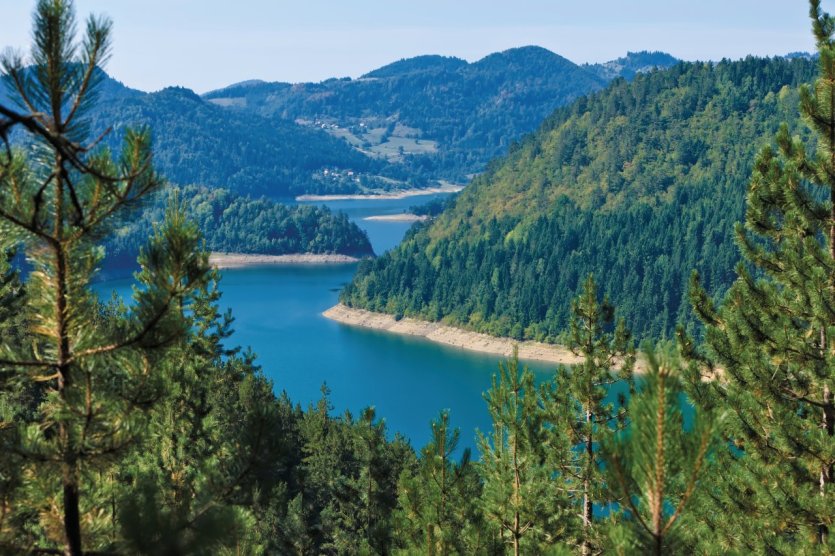
Crossroads between Europe and the Slavic civilizations, Serbia is still a little known country. However, its history dates back several millennia, its natural heritage is one of the most beautiful in Europe and its historical buildings are grandiose. Remains of Roman cities, medieval castles, monasteries galore, Serbia has a lot to offer you, as do its inhabitants. Indeed, you will be charmed by the kindness of the locals! Still a very rural country, Serbia is the ideal destination for those who love Mother Nature. Rivers, lakes, mountains, hills, it is incredible that such a small country can contain so many spectacular landscapes. Would you like to go for a bike ride along the Danube? Come with us and discover the must-see places in Serbia!
Monastery of Manasija
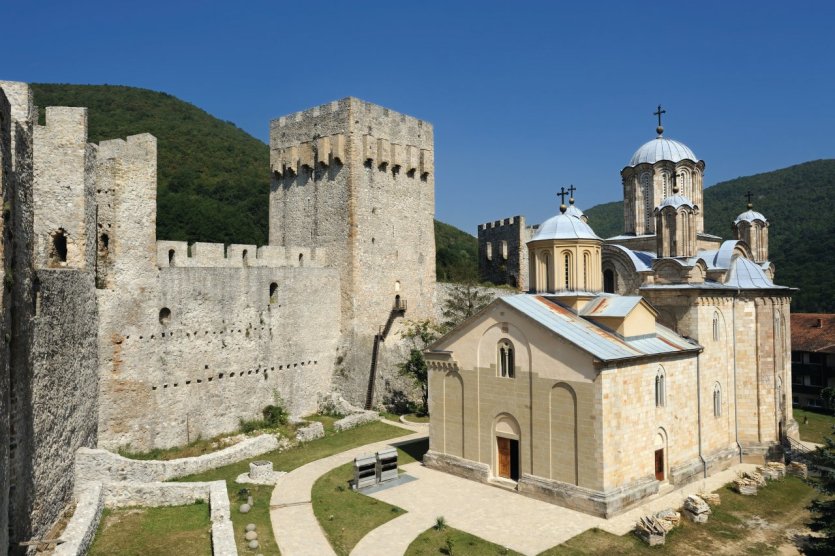
This monument is built with a unique style. Indeed, this monastery is architecturally protected as a strong castle, which is very rare in Serbia. Built at the beginning of the fifteenth century, Manasija Monastery enjoys a well-preserved church and eleven square towers, giving the book a majestic and colossal look. Importantly, this place was built by the despot Stefan Lazarevič ˇ who loaned a community of monks working around the theme of the Serbian language. Nicknamed the Resava School, the Manasija Monastery houses the oldest texts in Serbia. Inside the church of the Holy Trinity, it is advisable to stop in front of the paintings that are known to be among the most beautiful in Serbia, the colors are rich and burdened with gold funds. Impressive!
Fortress of Golubac
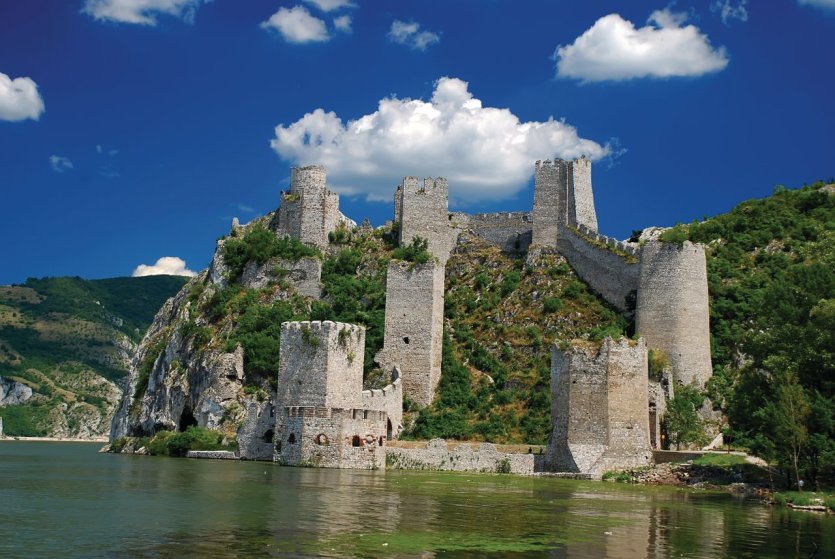
Located on the banks of the Danube, Golubac fortress seems to us from a fantastic film. Built at the beginning of the xivth century by Hungarians, the fortress is changing ownership over the years: Serbs, Turks, Austrians… It was only from 1867 that this monument became property of the state. Although nine towers make this wonder, you can visit only two. Archeologists believe that the atypical architecture of this castle was carried out in order to defend itself against enemies possessing white weapons. Then its architecture changed with the appearance of the cannons. Thus, circular and polygonal towers appeared. The area is such that it was possible to hide a fleet of hundred warships!
Belgrade
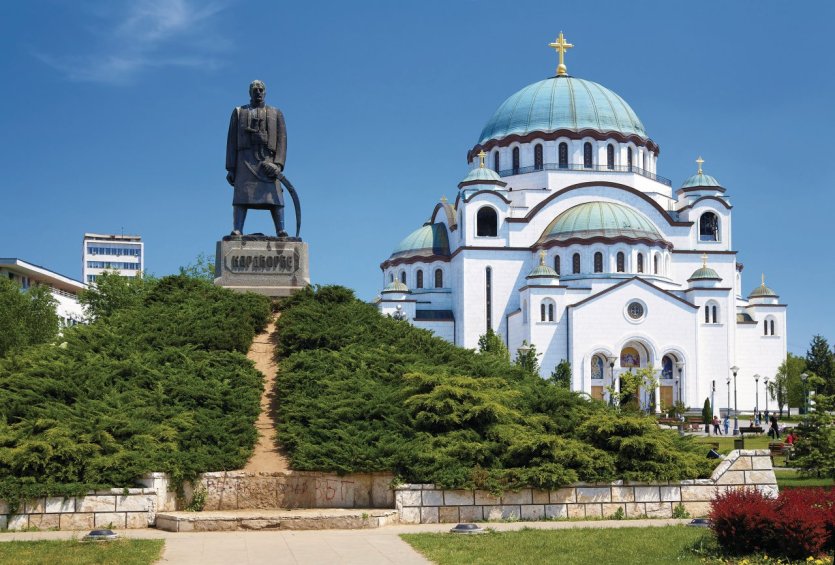
With its thousand-year-old history, its exceptional position on the Danube, its cultural wealth and its nightlife, Belgrade is the place to be in Serbia. The capital of the country, the city has been considered for many centuries as an important crossroads of the Balkans. Crossed by the rivers Sava and Danube, surrounded by hills, the city has a serene side. The places to see are rich in history and numerous: ethnographic museum, cathedral of the archangel Saint Michael, fortress of Kalemegdan, museum of the history of Serbia, etc. For water sports enthusiasts, Belgrade offers a wide range of choices! On the island of Ada Ciganlija you will find a large natural lake, which is unique in a European capital!
Ovčar-Kablar Gorge
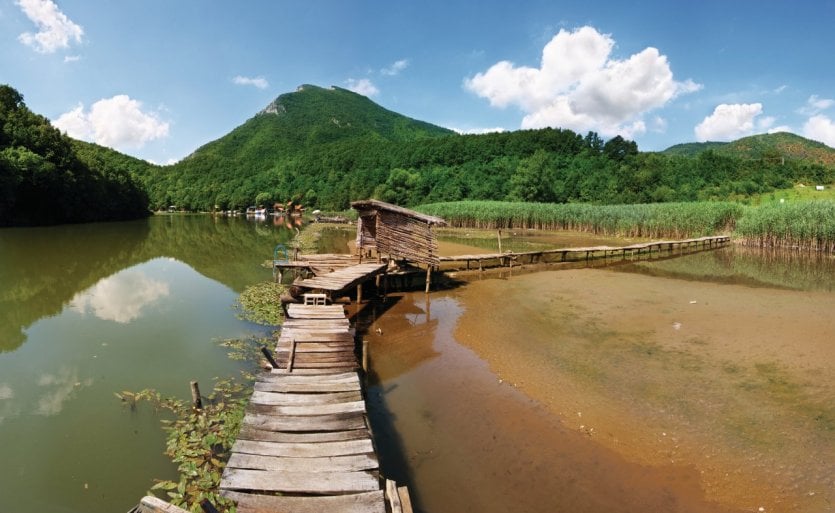
This is one of Serbia's most beautiful gorges. Located between the Ovčar and Kablar mountains, the Morava River has been lit by sinking between valleys and hills. All along this gorge you will discover outstanding sites such as Ovčar Spa, lakes and 12 monasteries! Perched at the top of various mountains, they overlook Morava with grace and offer you incredible views and landscaped gardens. The most important is the Saint-Nicolas Monastery. It brings together a studio of manuscripts and a princely palace. For lovers of books, don't miss the Vavedenje monastery which keeps precious manuscripts like the Gospel of Belgrade dating back to 1552. The hikers can stroll through 8 marked paths of incredible beauty.
The Zlatar
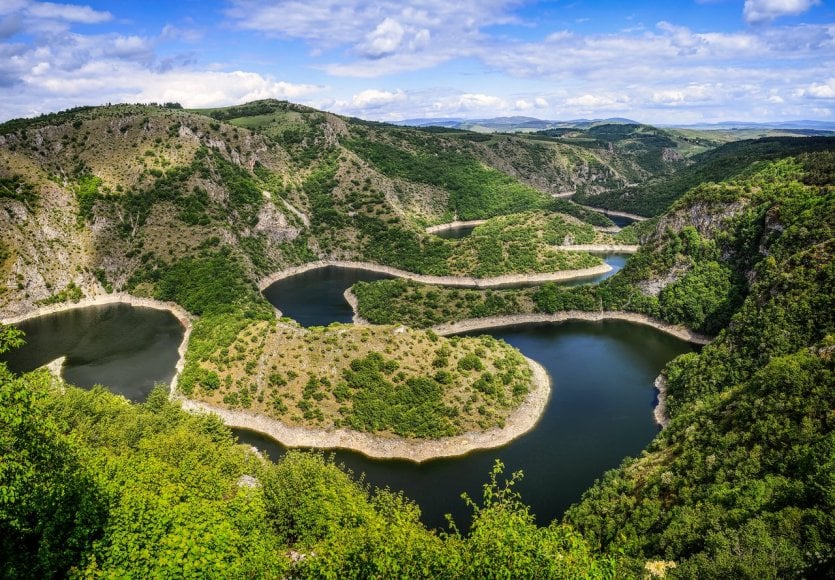
Zlatar is one of the most impressive mountain ranges in Serbia. Composed mainly of birch forests and high fir trees, the colors alternate between empire green and sunny yellow. With its rivers, canyons, typical cottages and pastures, Zlatar offers such a variety of landscapes at different heights that it will take many days to contemplate the natural palette that this place has to offer. Like the landscapes, the activities offered are numerous: caving, trekking, hang-gliding or snowshoeing and cross-country skiing in winter. Not far away, the Golija Mountains and their forests are also a nature break not to be neglected. UNESCO has declared this natural paradise a biosphere reserve.
Felix Romuliana
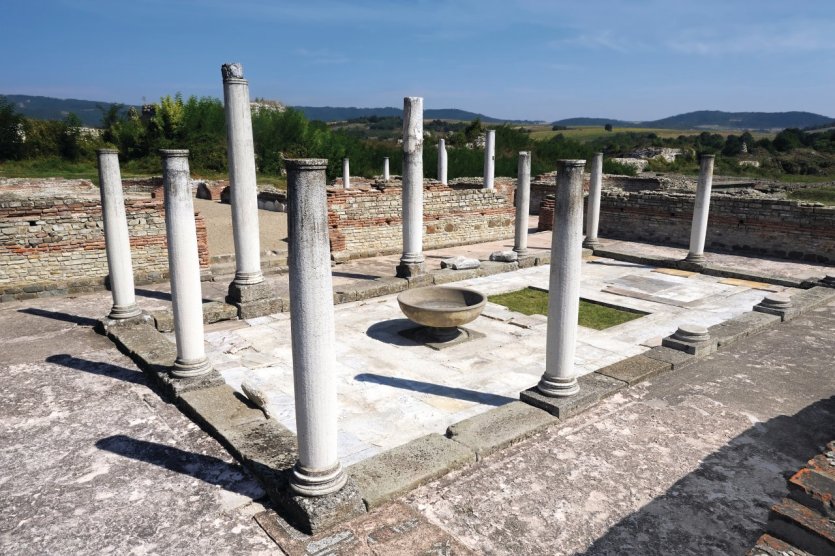
Former residence of the Roman Emperor Galère, Felix Romuliana is one of the best preserved Roman sites in Serbia. Inside this place, we visit villas, Roman palaces and other brick buildings. In the vestibule and the old thermal baths, mosaics are distinguished from different designs ranging from simple geometry to more complex figures: Adonis or hunting scenes. To admire even more impressive mosaics, you can visit the Zaječ ≡ ar museum. The materials that make up the statutes are also remarkable: Marble, pink granite etc. At the top of Magura Hill, you will find the Sanctuary of Galère and its mother: Romula. This city at the crossroads of several important roads was crucial to the Roman Empire. Indeed, it was an administrative center that collected the riches of the surrounding area.
Novi Sad
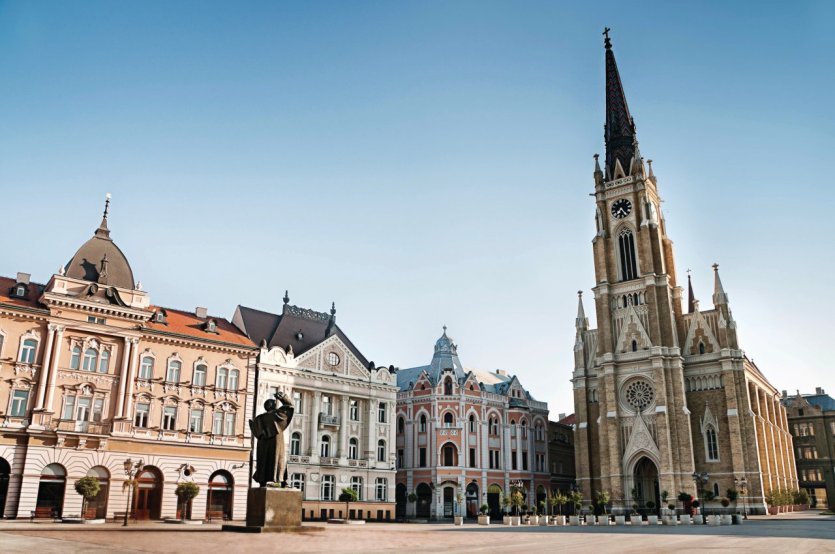
Novi Sad is now the second largest city in Serbia but has all the assets of a capital. On the banks of the Danube, the city enjoys a dream landscape and a high cultural reputation. The leader of Serbian intellectuals thanks to the Serbian Matrix, the city I-knows-what poetic. Close to the city, nature reserves, princely residences of the Dundjerskde dynasty and many monasteries flourish. As you will have understood, Novi Sad has all of a tourist city that is growing fast without forgetting its identity. Multiethnic, the city has many inhabitants of all origins: Serbs, Montenegrins, Hungarians, Gypsies, Croats and Slovaks. Here you will discover a visible Serbia nowhere else!
Studenica Monastery
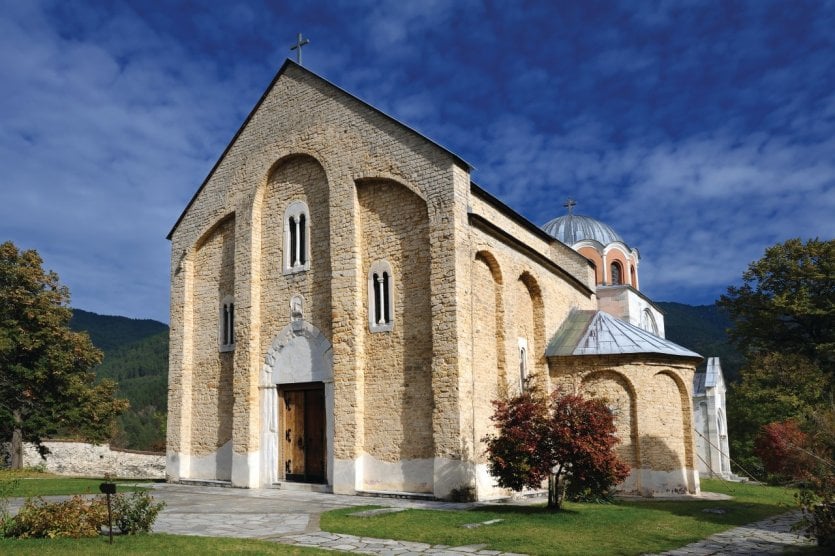
The unique formation of this site, in a circle, makes it a real pearl of the medieval architectural world. Studenica is a monastic ensemble that allows to see Serbian art at its peak. Composed from 12 churches, there are now 3. More than an important religious center, Studenica was an artistic and literary center where many artists from the Balkans were formed there. Since its creation in the xiith century by Stefan Nemanja, founder of the Serbian state in the Middle Ages, this space has continued to live. Inside the buildings, some Serbian pictorial masterpieces have to be observed. The church of the King houses a magnificent set of frescoes. Inscribed on the UNESCO World Heritage List, this site will allow you to explore the riches of medieval Serbia.
International trumpet festival
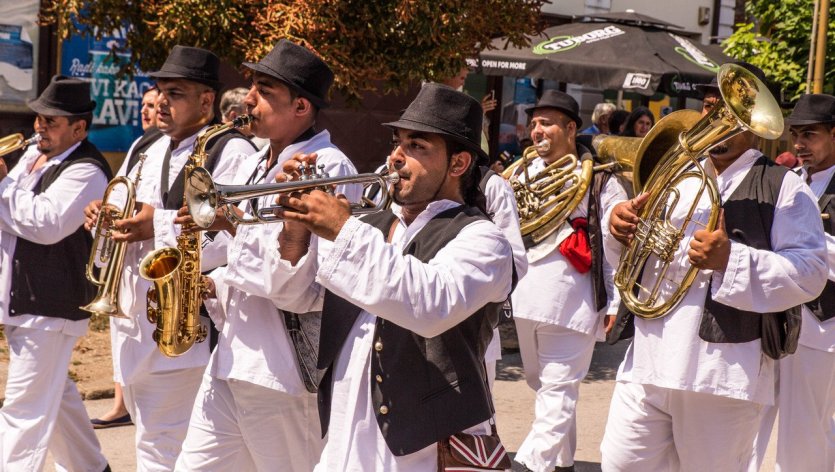
Every August, it is in the small village of Gučathat the largest trumpet festival in the world takes place. Specialized in brass bands, prestigious names of the music have stopped there: Goran Bregovic, Emir Kusturica, etc. Miles Davis even made a short stay there, and legend has it that at the end he declared: "I didn't know you could play the trumpet that way". Born in 1961, the festival is still growing and enjoys an international reputation, with groups from all over the world coming to perform! With a crazy and folkloric atmosphere in a country setting, it is a great opportunity to live a typical and unique moment thanks to the parades and the Serbian costumed dances!


